Dealing with car damage after a collision is undoubtedly stressful. Beyond the immediate aftermath, one of the first questions on any car owner’s mind is, “How long will my car be in the shop?” Understanding the typical car repair timeline can significantly reduce anxiety and help you plan accordingly.
At Car Repair Online, we understand the frustration and inconvenience of being without your vehicle. That’s why we’ve created this comprehensive guide to break down the answer to “how long does it take to repair a car usually?” We aim to provide clarity and realistic expectations about the auto repair process.
This article will explore average car repair times, differentiate between minor and major repairs, detail the stages involved in collision repair, and highlight the various factors that can influence the overall duration. Knowing what to expect empowers you to navigate the repair process with greater confidence.
Average Car Repair Times: Quick Overview
When asking “how long does it take to repair a car usually?”, it’s important to understand that the timeframe is highly variable. Generally, car repair times can range from just a few hours for very minor cosmetic work to several weeks, or even longer, for extensive structural damage.
To provide a clearer picture, here’s a table outlining average repair times based on the type of damage. Keep in mind these are estimates, and actual times can fluctuate.
| Type of Collision Repair | Average Time to Fix |
|---|---|
| Minor Collision Repair | 1-3 days |
| Major Collision Repair | 1 to 3 weeks |
| Paintless Dent Repair (PDR) | 1-2 days |
| Bumper Repair/Replacement | 1-3 days |
| Fender Repair/Replacement | 1-4 days |
| Door Repair/Replacement | 2-4 days |
| Glass Replacement | 1-2 days |
| Suspension Repair | 2-3 days |
| Frame Straightening | 4 days – 2 weeks |
| Minor Paint Repair (Scratches) | 2-4 days |
| Major Paint Repair (Panels) | 1-2 weeks |
| Airbag Replacement | 2-5 days |
| Engine Repair/Replacement | 1-4 weeks |
| Full Vehicle Restoration | 4-8 weeks or longer |

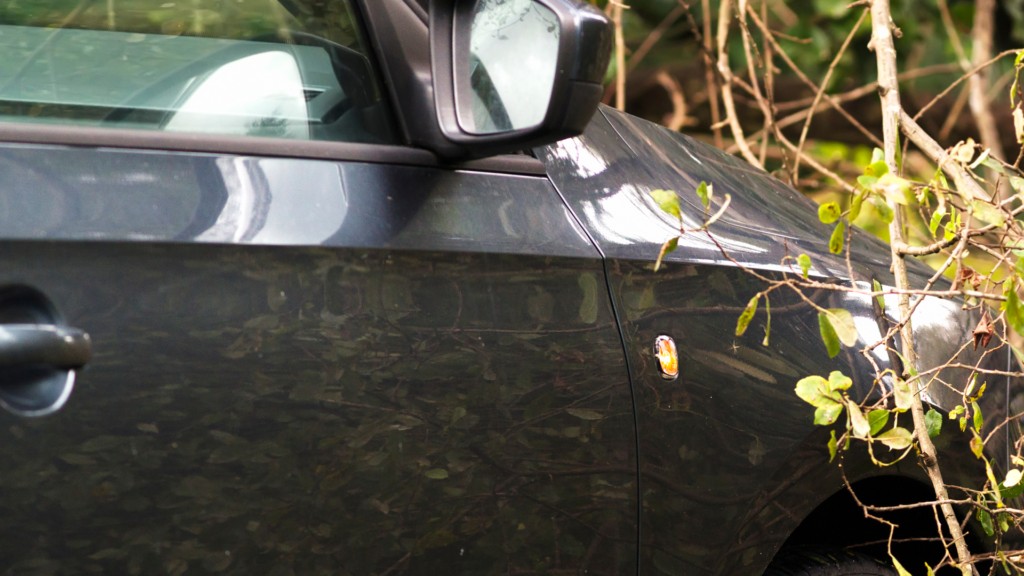
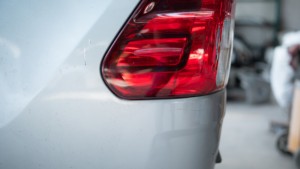
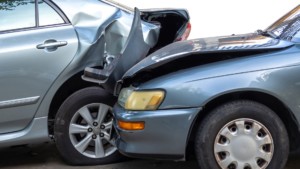
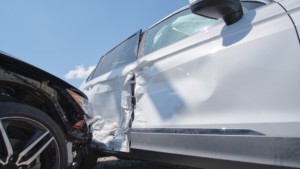
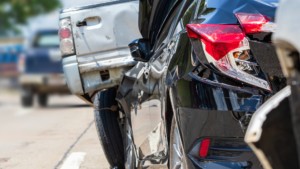
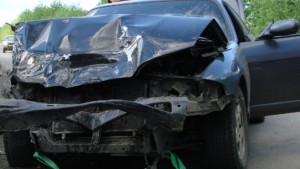


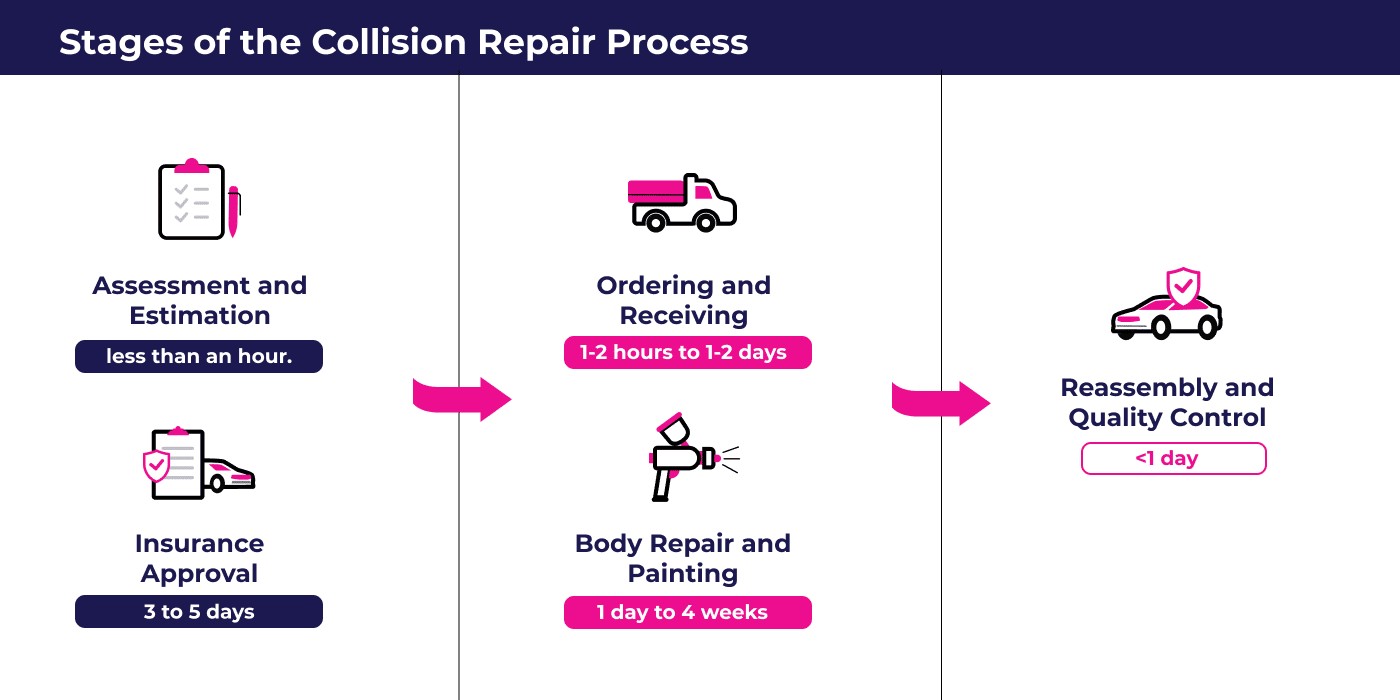
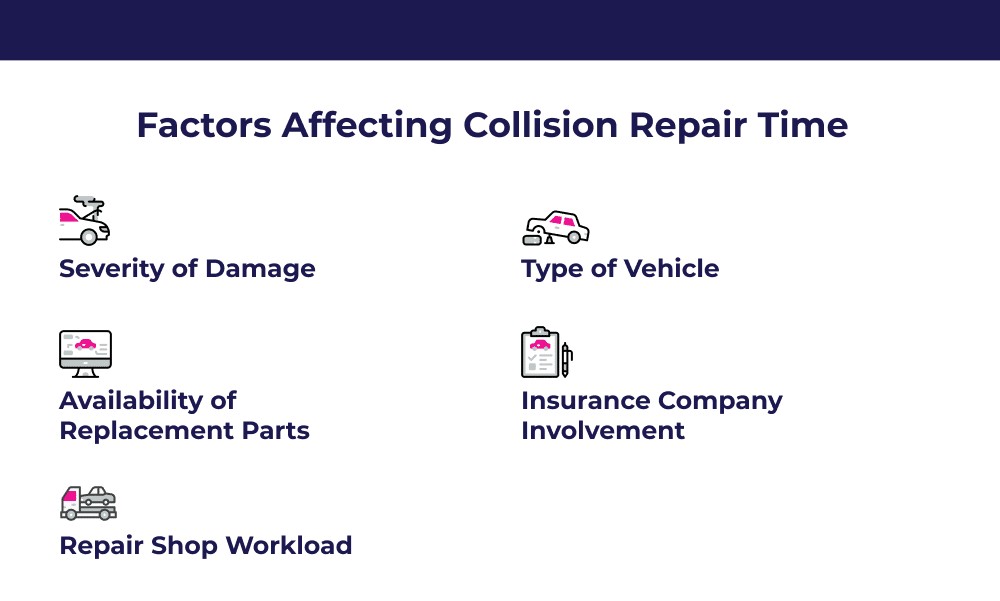
Diving Deeper: Minor vs. Major Collision Repairs
Understanding the difference between minor and major collision repair is key to estimating “how long does it take to repair a car usually” in your specific situation.
Minor Collision Repair
Minor collision repairs are typically quicker, usually taking 1 to 3 days. These repairs address cosmetic damage and don’t involve significant structural or mechanical issues. Think of scenarios like parking lot bumps, minor fender benders, or superficial damage.
These types of repairs often include:
- Small dents: Dents from shopping carts, hail, or minor impacts.
- Scratches: Surface scratches from branches or road debris.
- Minor bumper damage: Scuffs, scrapes, or small cracks in the bumper cover.
These repairs are faster because they don’t require extensive disassembly, frame work, or complex part replacements. Often, techniques like paintless dent repair can further expedite the process.
Example Scenarios:
- Shopping Cart Dent
- Tree Branch Scratches
- Minor Road Debris Scratches
Major Collision Repair
Major collision repairs, on the other hand, are more involved and consequently take longer, ranging from 1 to 3 weeks or more. These repairs address significant damage that affects the vehicle’s structural integrity, mechanical components, or safety systems.
Major repairs often involve:
- Frame damage: Damage to the car’s underlying frame structure.
- Mechanical problems: Issues with the engine, transmission, suspension, or other critical systems.
- Airbag deployment: Replacement of deployed airbags and related sensors.
- Significant body panel damage: Crushed doors, quarter panels, or roofs.
These repairs require specialized equipment, skilled technicians, and potentially longer wait times for parts, all contributing to a longer overall repair duration.
Example Scenarios:
- Rear-End Collision
- Side-Impact (T-Bone) Collision
- Parking Lot Pole Collision
Severe Collision Damage
In the most severe cases of collision damage, answering “how long does it take to repair a car usually” becomes even more complex. Severe damage can extend repair times beyond 3 weeks, especially when:
- Extensive frame damage is present: Requiring significant straightening or even frame replacement.
- Rare or back-ordered parts are needed: Leading to delays in obtaining necessary components.
- Complex mechanical or electrical systems are affected: Demanding specialized diagnostic and repair procedures.
The more extensive the damage, the more time is needed for accurate assessment, meticulous repair, and thorough quality checks.
Example Scenarios:
- High-Speed Head-On Collision
- Rollover Accident
- Severe High-Speed Side-Impact Collision
Understanding the Stages of Car Repair
To better understand the overall timeframe and answer “how long does it take to repair a car usually?”, it’s helpful to break down the typical stages involved in the collision repair process.
Stage 1: Initial Assessment and Estimate
The first step in any car repair is the assessment and estimate. A qualified technician will thoroughly inspect your vehicle to identify all damage, both visible and hidden. They will then prepare a detailed estimate outlining the necessary repairs, parts, and labor costs.
Timeframe: Estimates can often be provided within a few hours, but more complex damage may require a full day for a comprehensive assessment. Some shops, like many Car Repair Online partners, offer expedited estimate services.
Stage 2: Insurance Claim and Approval
If you are filing an insurance claim, the repair estimate must be submitted to your insurance company for review and approval. The insurance adjuster may inspect the vehicle themselves or rely on photos and the repair shop’s estimate. Negotiations between the shop and insurance company regarding repair procedures and costs can sometimes occur.
Timeframe: Insurance approval can take 3 to 5 business days, or potentially longer if there are complexities or disagreements about the repair plan. Prompt communication with your insurance provider can help expedite this stage.
Stage 3: Parts Ordering and Procurement
Once the estimate is approved, the repair shop will order the necessary replacement parts. The availability of parts greatly influences “how long does it take to repair a car usually”. Common parts for popular vehicles are typically readily available, while specialized parts, OEM (Original Equipment Manufacturer) parts, or parts for older or luxury vehicles may take longer to source. Supply chain disruptions can also impact part availability.
Timeframe: Part ordering can range from a few hours to several days or even weeks, depending on part availability and shipping times.
Stage 4: Body Repair and Painting
This is the core repair stage where technicians perform the actual repairs. This includes:
- Bodywork: Dent removal, panel replacement, frame straightening, and structural repairs.
- Painting: Matching the vehicle’s paint color, applying primer, base coat, and clear coat for a seamless finish.
This stage is labor-intensive and its duration is directly related to the extent of damage.
Timeframe: Body repair and painting can take from 1 day for minor repairs to several weeks for major structural work and multi-panel paint jobs.
Stage 5: Reassembly and Quality Control
After the major repairs and painting are complete, the vehicle is reassembled. This involves reinstalling trim pieces, lights, sensors, and other components. A thorough quality control inspection is then performed to ensure all repairs meet safety and quality standards, and that the vehicle is returned to its pre-accident condition as closely as possible.
Timeframe: Reassembly and quality control typically take 1 to 2 days.
Key Factors Influencing Car Repair Duration
Beyond the type and severity of damage, several other factors play a significant role in determining “how long does it take to repair a car usually?”.
Damage Severity
As discussed earlier, the extent of damage is a primary driver of repair time. Minor cosmetic repairs are quicker and less complex than major structural repairs. The more extensive the damage, the more time and labor will be required.
Parts Availability
The availability of replacement parts is a critical factor. Common parts for mainstream vehicles are usually readily accessible, minimizing delays. However, as mentioned before, rare, OEM, or back-ordered parts can significantly extend the repair timeline. Choosing aftermarket parts can sometimes expedite repairs, but it’s important to discuss the quality and warranty implications with your repair shop.
Vehicle Type
The make and model of your vehicle also impacts repair time. Common vehicles from brands like Toyota, Honda, Ford, and Chevrolet generally have readily available parts and established repair procedures, leading to potentially faster repairs. Luxury vehicles or rare makes may require specialized parts, tools, and technicians, which can lengthen repair times.
Insurance Company Involvement
Dealing with insurance claims adds a layer of process that can influence repair duration. The time it takes for claim approval, adjuster inspections, and potential negotiations can all contribute to the overall timeline. Choosing a repair shop that has experience working with insurance companies and can directly manage the claims process can help streamline this aspect.
Repair Shop Workload
The workload of the chosen auto repair shop also affects “how long does it take to repair a car usually?”. Busy shops may have longer lead times for scheduling repairs and may take longer to complete work due to their backlog. Choosing a reputable shop with adequate capacity and efficient processes is important.
Tips to Expedite Car Repairs
While some factors are outside your control, there are steps you can take to potentially influence and expedite the car repair process:
- Choose a Reputable and Efficient Repair Shop: Select a well-established and reputable auto body shop known for quality work and efficient processes. Look for shops with certifications, positive customer reviews, and experience handling repairs similar to yours.
- Understand Your Insurance Coverage: Familiarize yourself with your auto insurance policy and understand your coverage for collision repairs, including rental car benefits. This knowledge can help you navigate the claims process more smoothly.
- Maintain Clear Communication: Stay in regular communication with your repair shop and insurance adjuster. Promptly respond to requests for information and ask for updates on the repair progress. Clear and proactive communication can help prevent misunderstandings and delays.
Conclusion
Answering the question “how long does it take to repair a car usually?” is not straightforward. As we’ve explored, the repair timeline is influenced by a complex interplay of factors, from the severity of damage and parts availability to insurance processes and shop workload.
While it’s natural to feel anxious about being without your car, understanding the repair process and the factors involved can help you manage expectations and navigate the situation more effectively. Choosing a reputable repair shop, maintaining open communication, and being patient throughout the process are key to a smoother and ultimately satisfactory car repair experience.
Average Collision Repair Time FAQs
What transportation options do I have while my car is being repaired?
Being without your car can be disruptive. Explore transportation options such as:
- Rental Car Coverage: Check your insurance policy for rental car coverage. Many policies offer this benefit for collision repairs.
- Loaner Vehicles: Some repair shops offer loaner vehicles to customers while their cars are being repaired. Inquire about this option when choosing a shop.
- Ride-Sharing and Public Transportation: Utilize ride-sharing services or public transportation as alternative modes of transport.
- Ask Friends or Family: If possible, arrange for rides with friends or family.
Is there a warranty on automotive repairs?
Reputable auto body shops typically offer warranties on their repair work. Inquire about the warranty coverage offered by the shop you choose. Warranties can provide peace of mind and protection against potential issues arising from the repairs. Car Repair Online recommends choosing shops that offer comprehensive warranties on both parts and labor.
How does front-end collision repair time compare to rear-end collision repair?
Generally, front-end collision repairs can sometimes take longer and be more complex than rear-end repairs. The front of a vehicle houses more critical components like the engine, radiator, headlights, and grille. Damage to these areas can require more extensive repair work. Rear-end collisions, while still potentially significant, may sometimes involve less complex structural and mechanical damage, potentially leading to shorter repair times. However, the specific circumstances of each accident heavily influence the actual repair duration.
When is a car considered a total loss after a collision?
A car is typically considered a total loss when the cost of repairs exceeds a certain percentage of the vehicle’s pre-accident market value. This threshold is often around 70-75% of the car’s value, but it can vary by insurance company and state regulations. If your car is declared a total loss, the insurance company will typically pay you the vehicle’s actual cash value (ACV) rather than covering the repair costs.
What should I do if my car repair is taking longer than initially estimated?
If your car repair is taking significantly longer than the initial estimate, first, communicate directly with your repair shop. Politely inquire about the reason for the delay. Common reasons can include:
- Discovery of hidden damage: Technicians may uncover additional damage during the repair process that was not visible during the initial assessment.
- Parts delays: Unexpected delays in obtaining necessary parts can extend the repair timeline.
- Insurance claim complications: Issues with insurance approvals or claim processing can sometimes cause delays.
- Shop workload: Unforeseen increases in the shop’s workload can impact repair schedules.
If you are concerned or unsatisfied with the explanation or the extended timeframe, you can also contact your insurance adjuster to discuss the situation and seek their assistance.
How much does collision repair typically cost?
Similar to “how long does it take to repair a car usually?”, collision repair costs are highly variable. Costs depend on the type and severity of damage, the vehicle make and model, parts prices, labor rates, and geographic location. Minor repairs can range from a few hundred dollars, while major collision repairs can cost thousands, or even tens of thousands of dollars. Obtaining a detailed estimate from a reputable repair shop is crucial for understanding the potential costs involved in your specific situation. Car Repair Online can help you find certified shops in your area that provide transparent and fair estimates.
